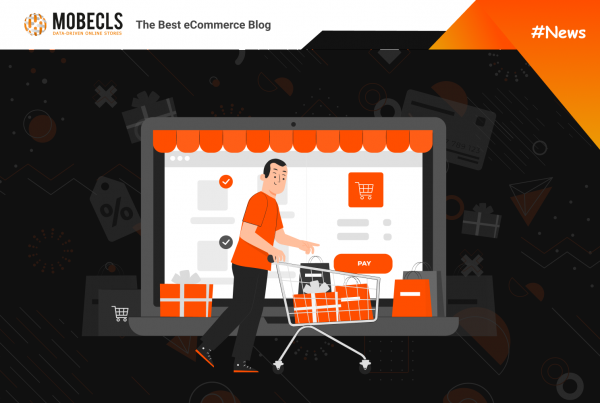Have you asked yourself why Coca-Cola successfully exists for more than 130 years? The answer is marketing. The main secret of the company is that it’s constantly working on guidelines and goals. Therefore, it was the first company that started portraying women at work but not in the kitchen. Also, they were the first who started personalizing their product by typing first names on coke cans.
All their marketing ideas are innovative that’s why the brand has become a part of pop culture. Coca-Cola is a content marketing trendsetter who uses the content as the main tool to rule the market.
Let’s find out what are the secrets of Coca-Cola marketing domination.
Create A Dream Team And Develop Marketing Course
A group of 40 employees had been brainstorming for 5 days to create the new Coca-Cola marketing manifesto. They were divided into several groups and each team was responsible for its field of marketing.
The process was led by Jonathan Mildenhall, Coca-Cola Vice President, Global Advertising Strategy and Creative. For 5 days, his task was to develop the theses for each group and ask as many questions as possible. The next step was one sleepless night of writing the text and structure of the manifesto. That’s the result of their work:
Use Outsourcing Companies
The content strategy of Coca-Cola is a treasure. The company decided to embody it by dividing it into several parts and delegating to several outsource agencies to remain its uniqueness on the market. Then, its implementation was entrusted to the only one agency, and it turned out to be a damn successful decision. Especially in terms of communication and time. The Coca-Cola marketing department would spend 100 thousand years to explain each of the agencies on how to work with the new Coca-Cola branding strategy.
As a result, 2016 became the most successful year for Coca-Cola in terms of creative awards and marketing success.
“Advertising + Content” Strategy
Content for global companies is still more like an addition to advertising than vice versa. Coca-Cola understands that it will have to continue to do advertising campaigns, but the content is key to the customers’ hearts. High-quality content allows you to effectively keep the audience’s attention on the brand, its values and tell stories.
Jonathan Mildenhall states that the more confidence a brand inspires and maintains an emotional connection with the consumer, the less this company faces the hard sell.
Despite its fame, Coca-Cola is still working with new customers who still have no emotional connection with the brand. Newly minted sweet drinkers go to high school every day around the world. Therefore, from a global point of view, such a large company should launch marketing campaigns both for new consumers and for those who love and support their favorite drink.
Content Structure And Expenses
The Coca-Cola model is 70/20/10.
70% of the marketing budget is spent on mandatory content, 20% – on an additional, and 10% on creative content. At the same time, the company spends the least money on generating creative content, but the most time to create it.
Content As The Main Asset Of The Company
Coca-Cola generates content that works well with different customer groups for a very long time.
“Factory of Happiness” is a great example of how their content is flexible. It can be a children cartoon or TV/YouTube commercials, which you won’t block with AdBlock.
Let’s take the Olympics as an example. The company released so much content at that time that it was enough for a sports documentary. Content should be something more than just content — it’s the principle that Coca-Cola chose as its philosophy.
Timeless Logo Font
Frank Mason Robinson, a Pemberton Accountant, decided that the company logo should be in Spencerian font which was widely used in the accounting environment. Robinson thought that it would help to stand out the competitors. The company standardized the logo in 1923, concluding that if the packaging design could change, adapting to different times, the logo should remain intact.
Since 1923, it remains original in the whole Coca-Cola products list. Even 100 years later it’s imprinted in the people’s minds all over the world.
Coca-Cola Marketing Strategy: The Concept Of Viral Ideas
According to Coca-Cola, high requirements for content development help to create viral ideas. The spread of such ideas cannot be controlled. That’s why they are called viral. However, these ideas must also meet the business goals of the company, brand’s and customers’ interests.
The stories that Coca-Cola tells cause a lot of talks and contribute to the brand’s promotion. On the Storytelling basis, the company developed a so-called interactive model:
Stories emerge viral ideas → Viral ideas conquer media space and cause talks → You should only answer these conversions for 365 days a year.
Coca-Cola Social Media Marketing: Happiness Machine
Coca-Cola has one of the largest public pages on the Net. It has more than 6 million Facebook followers. Any brand’s post is seen by tens and hundreds of thousands of loyal users. The Coca-Cola Happiness Machine video spread around the world and earn more than 2.5 million views after 70,000 of Facebook fans watched and reposted it.
Coca-Cola is actively using this platform and each post gives a brand from 400 to 700 thousand contacts. Every person who likes or comments a post promote this content among their friends. On average, each user has 140 Facebook friends.
You definitely need to watch this video:
Coca-Cola Uses Storytelling
Coca-Cola wins the battle for the audience’s attention with the help of storytelling. They don’t have time to simply create noise – they are busy creating resonant content.
The job of the Coca-Cola content marketing department is to continue selling sweet-coke bottles in 206 countries. The company has changed a little since its foundation. They release new products rarely, unlike other brands. The company has been telling the same stories for 100 years.
Coca-Cola creates stories that take places in the hearts of buyers. Coca-Cola says that it’s their secret formula.
Remember your favorite commercials – no matter what exactly: smartphone, camera, car or a network of gas stations. They don’t describe new features, functionality or characteristics, maybe just slightly. But they make chills run over your skin. After watching catching ads, we want to laugh, cry, philosophize, and in some cases even hug.
That is the meaning of storytelling. It should take place in the customers’ hearts and establish emotional contact between a brand and the consumers.



